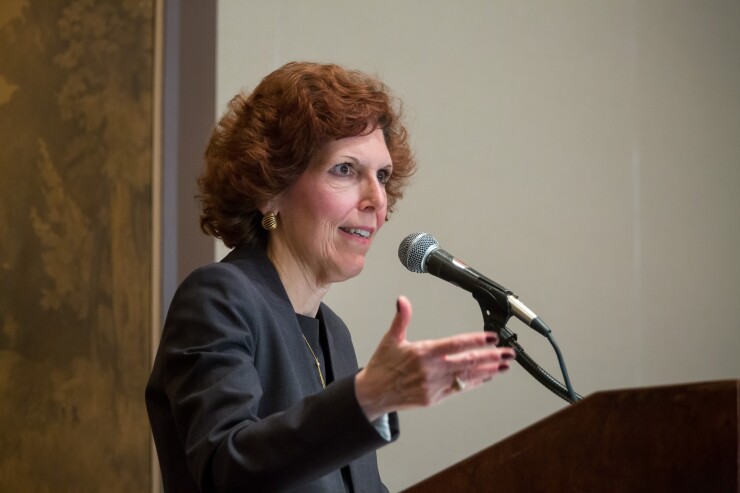Federal Reserve Bank of Cleveland President Loretta Mester said the U.S. central bank is close to wrapping up its aggressive tightening campaign if the economy evolves as expected.
“Regardless of the decision made at our next meeting, if the economy evolves as anticipated, in my view, we are likely near or at a holding point on the funds rate,” Mester said Friday in remarks prepared for an event organized by the Manhattan Institute.
Fed officials will accumulate more “information on economic and financial developments and assess the effects of the tightening in financial conditions that has already occurred,” she said.
Bloomberg News
Fed Chair Jerome Powell on Thursday suggested the U.S. central bank is inclined to hold interest rates steady again at its next meeting, but he left the door open to the possibility of a future hike if policymakers see further signs of resilient economic growth.
Officials held their policy rate in a range of 5.25% to 5.5% last month. Their forecasts showed 12 of 19 officials wanted one more hike this year and the median projection showed that fewer rate cuts expected next year than what was forecast in June.
Mester, who doesn’t vote on policy decisions this year, said inflation-forecast risks remain tilted to the upside and that the September projections were “consistent” with her reading of the economy and the outlook.
The September report on consumer prices, which showed they are still running at a brisk pace, is a reminder that the Fed “cannot count on the progress continuing at the same good pace we have seen in recent months,” Mester said.
“It is important to guard against becoming complacent if it takes longer and longer to achieve the Fed’s 2% goal,” she said.
Mester reiterated the recent rise in long-term Treasury yields could affect the Fed’s future rate decisions if they persist. “As one of the financial conditions we monitor, it will be one of the factors I consider when evaluating the appropriate path of monetary policy going forward,” Mester said.
Mester added the increase may be driven by higher growth expectations, an acceptance that rates are likely to remain elevated for longer and investors demanding greater compensation.
The Cleveland Fed chief said earlier this month that any decision on future rate increases would be based on incoming data and that policymakers’ discussion is moving to how long the Fed should hold its benchmark rate high.
